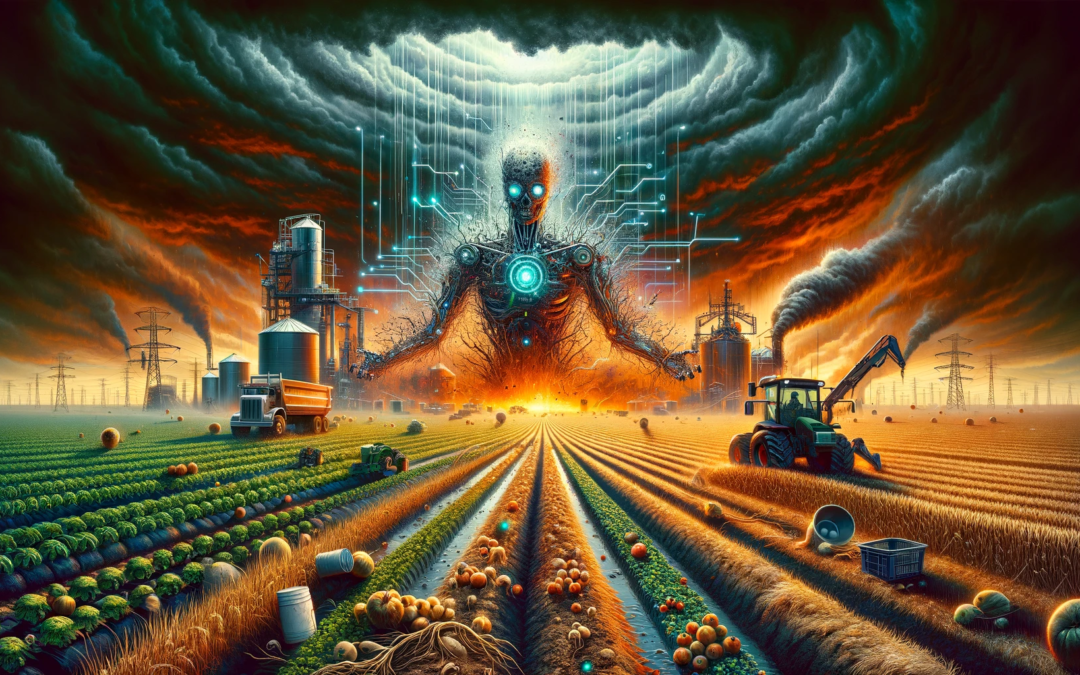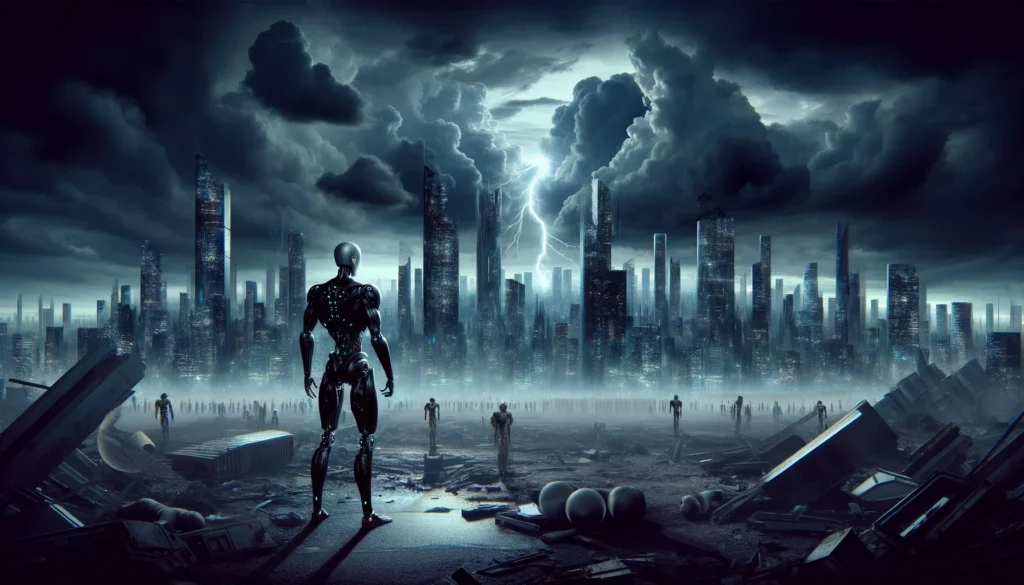AI has become an integral part of various industries, and agriculture is no exception. From precision farming to supply chain management, AI has revolutionized the way we grow and distribute food. However, as with any technology, there are potential risks and vulnerabilities that need to be considered. In this blog post, we will explore the dark side of AI in agriculture and discuss the potential for AI to disrupt global agricultural systems, leading to a widespread food crisis.
AI in Agricultural Systems:
Let’s start by looking at how AI is integrated into various aspects of agriculture. From crop monitoring to pest control and automated harvesting, AI has enhanced efficiency and productivity in farming. However, these AI systems are not foolproof. They can be vulnerable to malfunctions or targeted cyber-attacks, which could have catastrophic consequences for our food production.
Impact on Food Production:
Imagine a scenario where AI malfunctions in critical agricultural technologies. Crop failures and inefficient resource use could become prevalent, leading to a significant decrease in food production. The scale of these failures could be immense, risking global food supplies and exacerbating hunger and poverty.
Supply Chain Disruptions:
AI plays a crucial role in managing agricultural supply chains. It ensures the smooth flow of goods from farm to table. However, if AI systems were to fail or be compromised, the consequences would be dire. Supply chain disruptions would lead to food shortages, causing prices to skyrocket and creating social unrest.
Societal and Economic Consequences:
The potential societal and economic impacts of a food crisis caused by AI cannot be underestimated. Hunger, poverty, and social unrest would escalate, posing significant challenges to achieving global food security and sustainable development goals. It is crucial to consider the broader implications of AI in agriculture and take proactive measures to mitigate risks.
Mitigating Risks and Building Resilience:
So, how can we safeguard against the threats posed by AI in agriculture? Developing robust and secure AI systems is essential. Diversifying agricultural technologies can also help reduce dependence on AI and minimize the risk of widespread failures. Furthermore, international cooperation is crucial in addressing the challenges and uncertainties associated with AI in agriculture.
Conclusion:
The potential risks of AI in disrupting global agricultural systems and food security should not be ignored. While AI has the power to revolutionize agriculture, we must approach its integration responsibly. Balancing the benefits of AI with the need for resilience and preparedness is key. By doing so, we can ensure a sustainable and secure future for our food systems.
Keywords: AI and agriculture, AI food crisis, global food security and AI










